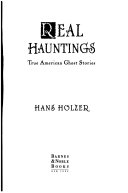-
DESCRIPTION
"Three Faces of Jesus: How Jews, Christians, and Muslims See Him" by Richard E. Wentz offers a comparative exploration of how Jesus is perceived across three major Abrahamic religions. The book provides a detailed examination of Jesus' role and significance from the perspectives of Judaism, Christianity, and Islam.
Key Points
1. **Comparative Analysis**: Wentz delves into the distinct ways each faith views Jesus, highlighting theological and historical differences. Christians see Jesus as the central figure of their faith and the Son of God, while Jews view Him as a historical figure but not the Messiah, and Muslims regard Him as a prophet and a significant, revered figure but not divine.
2. **Historical Context**: The book places Jesus within the historical and religious contexts of each tradition, offering insights into how historical events and theological developments have shaped these views.
3. **Interfaith Dialogue**: Wentz aims to promote understanding and dialogue among the three religions by elucidating their differing perspectives on Jesus, encouraging readers to appreciate the shared and divergent aspects of these views.
### Strengths
- **Informative**: Provides a clear and accessible overview of the different perspectives on Jesus across these major religions.
- **Educational**: Helps readers understand the commonalities and differences in how these faiths view Jesus, fostering interfaith respect.
### Criticisms
- **Depth**: The book may not delve deeply enough into the complexities of each perspective for readers seeking a more scholarly or nuanced analysis.
Overall, "Three Faces of Jesus" is a valuable resource for those interested in interfaith dialogue and the comparative study of religion, offering a concise and informative look at how Jesus is perceived in Judaism, Christianity, and Islam.








![The Tarot of Vampyres [With Phantasmagoria]](http://bizweb.dktcdn.net/thumb/large/100/417/831/products/z5743171178368-a25d4462c4daeb22c8d8a07ddb0ef1bb.jpg?v=1723979886827)






